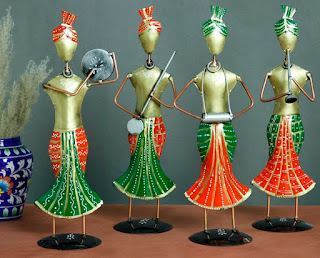Mandala Art: The Circle and more
For those who are not familiar with the term Mandala, it represents the circular in Sanskrit. Sharing a close connection with Hinduism and Buddhist religion, Mandala is an art form practiced widely throughout the world.
A mandala consists of a single dot in the center, that represents the origin of universe and from this central dot originates the circles which represent the circle of life. This circular nature of a radiating pattern works as an artistic imagination of a perfect universe. In many Mandala art patterns, the eight spokes represent the Eightfold Path of enlightenment which, according to Buddhism leads to liberation and rebirth.
 |
| Mandala Art Tapestry |
https://www.kalakyari.com/product/mandala-wall-tapestry-3
The making of a mandala painting:
The artists involved in traditional mandala art were monks or laymen whose family tradition was associated with mandala art form. In Buddhism, such painters were religiously minded, and would undergo certain level of Buddhist education and paintings were then initiated by their teacher.
Paintings were created in a systematic way, proceeding through four steps:
1)The raw material
The essentials are same as a stretched canvas on a wooden frame and coated with gesso. Gesso is a white earth pigment, which provides color and texture to the canvas and also adds life.
2)The Rough sketch
The teacher identifies the design for the student suited to his/her ability and a rough diagram is drawn on a white sheet of paper. This is to provide a hint of the geometric/circular pattern. Further, the student is expected to apply the knowledge of traditional mandala designs like that of wheel, bell, triangle, lotus flower or medallion. The patron indicated what was to be depicted. A diagram might be provided.
3)Initial paint
Paints can be either mineral pigments or organic dyes. Brushes made of animal hair are used for finesse. Color is then mixed with a binder(glue), before being applied as paints. and this layer serves as the first coat of color.
4)Finishing touches
Most painters use a knife for scraping the painting to create an even surface. The canvas is then dusted with a small ball of parched grain flour dough for a matte finish.
One can spend an entire afternoon gazing at Mandala Tapestry, looking for answers to their questions. Investing oneself in designing and creating mandala art shapes and patterns can be a great therapeutic exercise. It’s Handmade on 100 percent cotton fabric and instantly adds an ethnic feel to your room and is a must have for all occasions.


Comments
Post a Comment